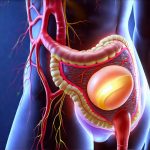The human gut is often described as our ‘second brain’, not merely for its surprising neural connections but also because of the profound influence it exerts on seemingly disparate bodily functions – from mood regulation and immune system strength to energy levels and even cognitive performance. We’re increasingly aware that a healthy gut microbiome, the complex community of microorganisms residing in our digestive tract, is fundamental to overall wellbeing. However, focusing solely on achieving an ‘ideal’ microbiome can miss crucial nuances. Often overlooked is the concept of mild resistance, a subtle but powerful signal from the gut indicating it’s not quite thriving, even if outright ‘dysbiosis’ isn’t present. This isn’t necessarily about illness; it’s about suboptimal function – a state where things aren’t actively wrong, but certainly aren’t as efficient or robust as they could be.
This subtle resistance manifests in a myriad of ways that many people dismiss as ‘just how things are’. It might appear as persistent low-grade fatigue, difficulty concentrating, skin issues that flare up periodically, or a general sense of being ‘off’. These symptoms rarely scream for medical attention but collectively impact quality of life. Understanding mild resistance requires shifting our perspective from disease eradication to functional optimization – recognizing the gut’s subtle cues and responding with targeted support rather than aggressive interventions. It’s about listening to the “voice of the gut” and learning what it needs to truly flourish, which is often less about adding more probiotics and more about creating an environment where existing beneficial microbes can thrive.
Decoding Gut Signals: Beyond Obvious Symptoms
Mild resistance isn’t always accompanied by dramatic digestive distress like bloating or diarrhea. In fact, many experiencing it have relatively ‘normal’ bowel movements. This makes it incredibly difficult to identify without careful self-observation and a willingness to connect the dots between seemingly unrelated symptoms. The key is recognizing patterns. It’s less about what happens during an acute flare-up and more about the consistent background level of sub-optimal function.
This often manifests as:
* Increased sensitivity to certain foods that previously didn’t cause issues.
* A nagging sense of fatigue even with adequate sleep.
* Mood fluctuations or increased irritability.
* Skin problems like eczema or acne that seem resistant to typical treatments.
* Difficulty recovering from illness, even minor ones.
These aren’t necessarily signs of a major health problem, but they are indicators that something isn’t quite right within the gut ecosystem. The gut microbiome is incredibly sensitive to factors like stress, diet, sleep patterns, and exposure to toxins. When these factors are consistently out of balance, even if mildly so, it creates an environment where beneficial microbes struggle and less desirable ones can gain a foothold – not enough to cause full-blown dysbiosis, but enough to create resistance. This leads to reduced nutrient absorption, impaired immune function, and ultimately, those subtle symptoms we often dismiss.
The challenge lies in distinguishing mild resistance from normal fluctuations or temporary imbalances. It requires paying close attention to how your body responds to different stimuli and tracking changes over time. Keeping a detailed journal of food intake, stress levels, sleep quality, and any related symptoms can be immensely helpful in identifying patterns and pinpointing potential triggers. Self-awareness is the first step towards addressing this often overlooked aspect of gut health. Recognizing these subtle signs is also important if you are experiencing the impact of cancer on digestive function.
Cultivating Resilience: A Holistic Approach to Gut Support
Addressing mild resistance isn’t about quick fixes or chasing the latest superfood; it’s about building a resilient gut ecosystem through holistic lifestyle modifications. This means focusing on long-term strategies that support both the microbiome and overall wellbeing. While probiotics can play a role, they are often most effective when paired with prebiotics – non-digestible fibers that feed beneficial bacteria already residing in the gut. A diet rich in diverse plant foods is arguably the most powerful prebiotic source available.
Beyond dietary changes, stress management is crucial. Chronic stress significantly impacts gut health by altering microbiome composition and increasing intestinal permeability (often referred to as ‘leaky gut’). Techniques like mindfulness meditation, yoga, deep breathing exercises, or spending time in nature can all help mitigate the negative effects of stress on the gut. Similarly, prioritizing sleep is essential. Adequate sleep allows the body to repair and restore itself, including the gut microbiome. A holistic approach acknowledges that the gut doesn’t exist in isolation; it’s interconnected with every aspect of our health. This connection also emphasizes why understanding the role of nutritionists can be so beneficial during challenging times.
The Role of Food Sensitivity & Elimination
One often overlooked aspect of mild resistance is undiagnosed food sensitivities. These aren’t allergies – which trigger a rapid immune response – but rather delayed reactions that can cause subtle inflammation and disrupt gut function. Identifying these sensitivities can be challenging, as symptoms may not appear immediately after consuming the offending food. An elimination diet is often the most effective way to pinpoint them.
- Remove common inflammatory foods from your diet for a period of 2-3 weeks (gluten, dairy, soy, corn, sugar, processed foods).
- Observe how your symptoms change during this elimination phase.
- Gradually reintroduce each food one at a time, carefully monitoring for any adverse reactions.
It’s crucial to keep a detailed food journal throughout the process, noting both what you eat and how you feel. If you suspect a sensitivity but are unsure about which foods to eliminate, working with a registered dietitian or functional medicine practitioner can be incredibly helpful. Elimination diets aren’t meant to be permanent; they’re diagnostic tools. Once you’ve identified trigger foods, you can either avoid them altogether or find ways to minimize your intake. Many patients also benefit from understanding the symptoms of lactose intolerance as part of this process.
Understanding the Gut-Brain Connection & Stress Management
The gut and brain are intimately connected via the gut-brain axis, a bidirectional communication network that influences both physical and mental health. Chronic stress disrupts this connection, leading to imbalances in the microbiome and increased intestinal permeability. This allows inflammatory molecules to enter the bloodstream, impacting brain function and potentially contributing to mood disorders, anxiety, and cognitive impairment.
Managing stress isn’t about eliminating it entirely – that’s unrealistic – but rather developing healthy coping mechanisms to mitigate its impact on the gut (and vice versa). Techniques like mindfulness meditation have been shown to reduce cortisol levels (the stress hormone) and improve microbiome diversity. Regular physical activity also plays a crucial role, as exercise releases endorphins which have mood-boosting effects. Prioritizing stress management is not just about mental wellbeing; it’s about gut health. This can be particularly important when considering understanding the impact of stress on younger individuals as well.
The Power of Fiber & Prebiotic Foods
Fiber isn’t just for regularity; it’s the primary food source for beneficial bacteria in the gut. Different types of fiber support different microbial communities, highlighting the importance of dietary diversity. Prebiotic foods are particularly valuable as they selectively nourish these beneficial microbes, promoting their growth and activity. Examples include:
* Garlic & onions
* Leeks & asparagus
* Bananas (slightly green)
* Oats & barley
* Apples
Incorporating a variety of prebiotic-rich foods into your diet can significantly improve gut health and reduce mild resistance. However, it’s important to increase fiber intake gradually to avoid digestive discomfort. Sudden increases in fiber can actually exacerbate symptoms. Listen to your body and adjust accordingly. Focusing on whole, unprocessed foods is the cornerstone of a healthy gut microbiome and a resilient digestive system. It’s also helpful to remember the role of caregivers when making dietary adjustments for others.


















